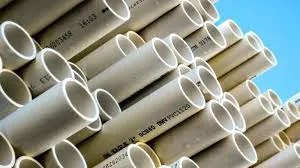Oct . 21, 2024 18:29 Back to list
Comparison of PVC Pipes and PPR Pipes for Various Applications and Services
PVC Pipe vs. PPR Pipe A Comprehensive Comparison
When it comes to plumbing and piping solutions, selecting the right material is crucial for both performance and durability. Two popular choices in the market today are Polyvinyl Chloride (PVC) and Polypropylene Random Copolymer (PPR) pipes. Both materials have unique characteristics, benefits, and drawbacks. Understanding these differences is essential for making an informed decision that meets your plumbing needs.
1. Material Composition
PVC pipes are made from polyvinyl chloride, a synthetic plastic polymer. This material is known for its rigidity and strength. On the other hand, PPR pipes are made from polypropylene, a thermoplastic polymer that is more flexible than PVC. This flexibility allows PPR pipes to withstand stress without cracking, making them a suitable option for various applications.
2. Temperature Resistance
One of the significant differences between PVC and PPR pipes is their temperature resistance. PVC pipes can handle temperatures up to about 60°C (140°F) before they begin to soften. Conversely, PPR pipes can withstand higher temperatures, often up to 95°C (203°F), making them ideal for hot water applications. Therefore, if you are dealing with hot water systems, PPR pipes would be a better choice.
Both PVC and PPR pipes boast excellent durability; however, PPR tends to have a slight edge in long-term performance. PVC is prone to brittleness over time, particularly when exposed to UV light, which can lead to cracking and structural failure. PPR pipes are resistant to UV radiation and do not become brittle, giving them a longer lifespan, often exceeding 50 years in various applications.
4. Installation and Handling
pvc pipe vs ppr pipe service

PVC pipes are lighter and easier to handle than PPR, making them simpler to install for many plumbing applications. They can be easily cut, joined, and secured using solvent cement, which provides a watertight bond. PPR pipes, while a bit heavier, require a different installation process involving heat fusion. This procedure can be more time-consuming and requires special tools, which may add to overall project costs. However, once installed, PPR pipes form a strong joint that is less prone to leaks.
5. Cost
In terms of cost, PVC pipes are generally less expensive than PPR pipes, both in terms of material cost and installation. This makes PVC a popular choice for budget-conscious projects. However, while PPR may have a higher initial cost, its superior durability and lower maintenance costs can lead to savings over the long term, especially in hot water applications.
6. Applications
PVC pipes are widely used in drainage, wastewater management, and ventilation systems thanks to their ability to resist corrosion and chemicals. Their rigidity makes them suitable for gravity-fed drainage systems. Conversely, PPR pipes are commonly used in hot and cold water supply systems, heating applications, and industrial fluids. Their durability in high-temperature environments makes them particularly valuable in residential and commercial hot water systems.
7. Environmental Considerations
As environmental concerns grow, the sustainability of piping materials becomes increasingly important. PVC, while extensively used, raises concerns related to its production and disposal due to the release of harmful dioxins. In contrast, PPR is regarded as a more environmentally friendly option. It does not release harmful chemicals during its lifecycle, making it a safer alternative for both health and the environment.
Conclusion
Choosing between PVC and PPR pipes largely depends on the specific needs of your project. If you are looking for a cost-effective solution for cold-water applications or drainage systems, PVC might be the way to go. However, for high-temperature applications and long-term usage, PPR pipes offer superior performance and durability. By weighing the advantages and disadvantages of each material, you can make an informed decision that ensures the longevity and efficiency of your plumbing system.
-
High-Quality PVC Borehole Pipes Durable & Versatile Pipe Solutions
NewsJul.08,2025
-
High-Quality PVC Perforated Pipes for Efficient Drainage Leading Manufacturers & Factories
NewsJul.08,2025
-
High-Quality PVC Borehole Pipes Durable Pipe Solutions by Leading Manufacturer
NewsJul.08,2025
-
High-Quality PVC Borehole Pipes Reliable PVC Pipe Manufacturer Solutions
NewsJul.07,2025
-
High-Quality UPVC Drain Pipes Durable HDPE & Drain Pipe Solutions
NewsJul.07,2025
-
High-Quality Conduit Pipes & HDPE Conduit Fittings Manufacturer Reliable Factory Supply
NewsJul.06,2025

